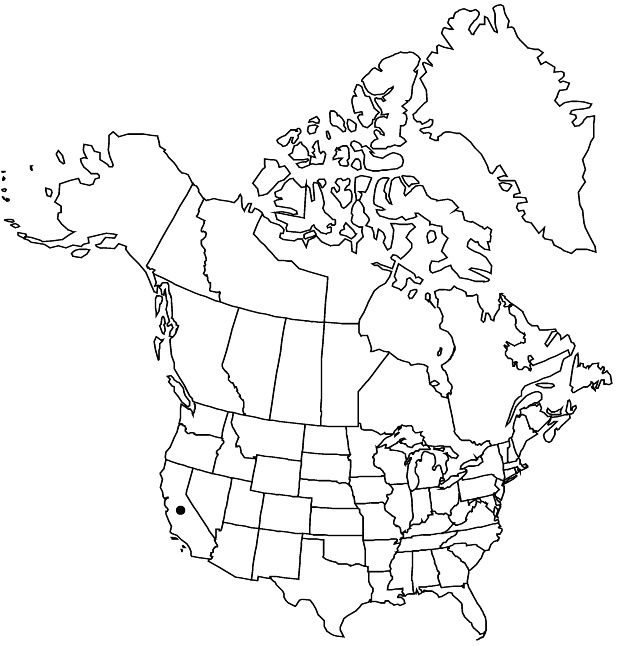Arctostaphylos densiflora
Leafl. W. Bot. 1: 31. 1932 ,.
Shrubs, erect or mound-forming, ca. 1 m; burl absent; twigs sparsely short-hairy. Leaves: petiole 4–5 mm; blade bright green, lustrous, elliptic to narrowly lanceolate-elliptic, 1–2.5 × 0.5–1.5 cm, base cuneate to obtuse, margins entire, plane, surfaces smooth, sparsely puberulent. Inflorescences panicles, 3–5-branched; immature inflorescence pendent, (compact), branches ± spreading, axis 1–1.5 cm, 1+ mm diam., sparsely short-hairy; bracts not appressed, scalelike, deltate to awl-like, 1.5–3 mm (longer than buds), apex acute, surfaces glabrous. Pedicels 4–5 mm, glabrous. Flowers: corolla white, urceolate; ovary glabrous. Fruits subglobose, 5–6 mm diam., glabrous. Stones distinct. 2n = 26.
Phenology: Flowering winter–early spring.
Habitat: Acidic marine sands
Elevation: 100 m
Discussion
Of conservation concern.
Arctostaphylos densiflora is known only from Vine Hill, Sonoma County. It is the primary source of one of the most widely planted horticultural varieties of the genus (McMinn manzanita). It is in the Center for Plant Conservation’s National Collection of Endangered Plants.
Selected References
None.
